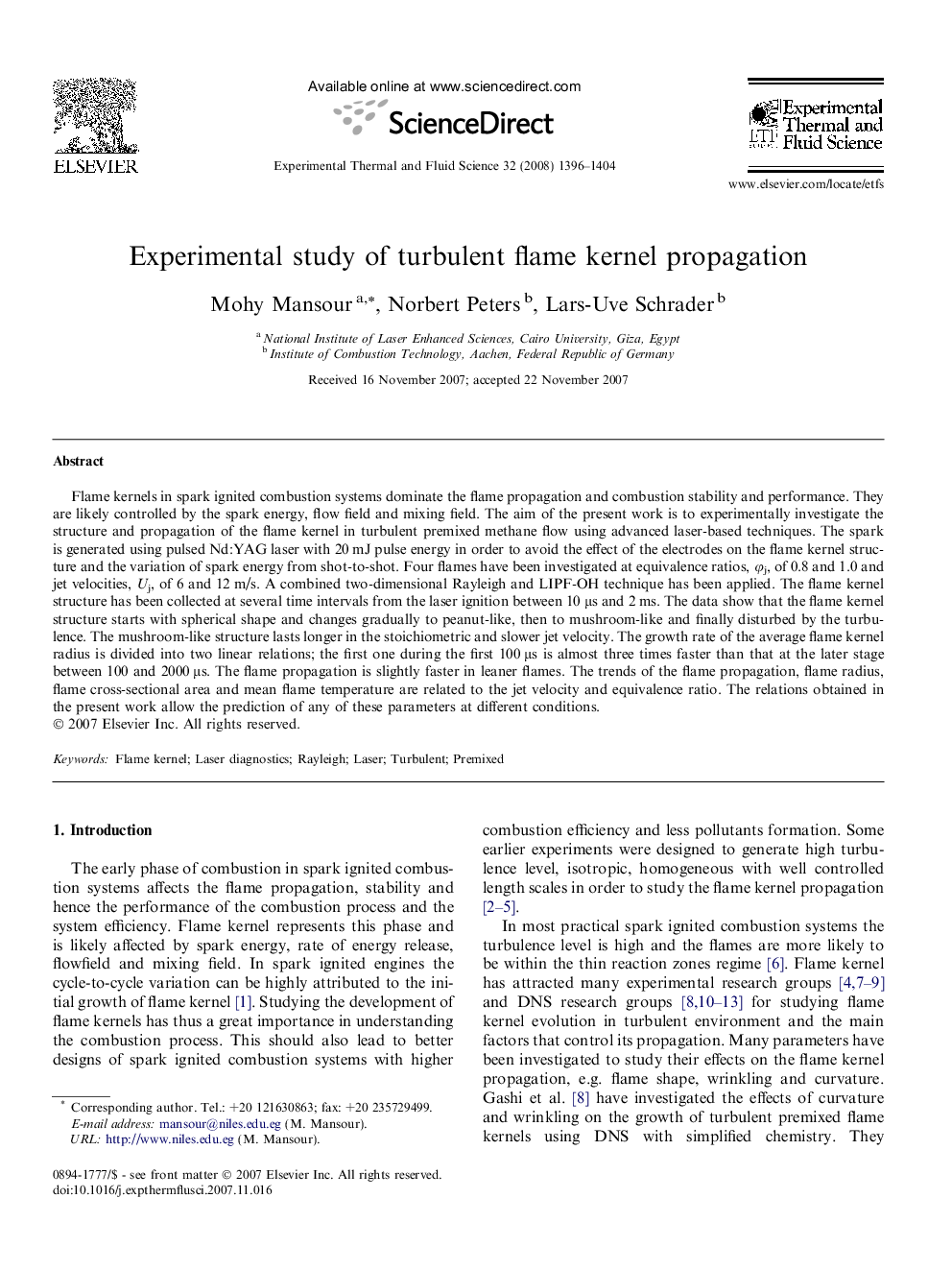| Article ID | Journal | Published Year | Pages | File Type |
|---|---|---|---|---|
| 652539 | Experimental Thermal and Fluid Science | 2008 | 9 Pages |
Abstract
Flame kernels in spark ignited combustion systems dominate the flame propagation and combustion stability and performance. They are likely controlled by the spark energy, flow field and mixing field. The aim of the present work is to experimentally investigate the structure and propagation of the flame kernel in turbulent premixed methane flow using advanced laser-based techniques. The spark is generated using pulsed Nd:YAG laser with 20 mJ pulse energy in order to avoid the effect of the electrodes on the flame kernel structure and the variation of spark energy from shot-to-shot. Four flames have been investigated at equivalence ratios, Ïj, of 0.8 and 1.0 and jet velocities, Uj, of 6 and 12 m/s. A combined two-dimensional Rayleigh and LIPF-OH technique has been applied. The flame kernel structure has been collected at several time intervals from the laser ignition between 10 μs and 2 ms. The data show that the flame kernel structure starts with spherical shape and changes gradually to peanut-like, then to mushroom-like and finally disturbed by the turbulence. The mushroom-like structure lasts longer in the stoichiometric and slower jet velocity. The growth rate of the average flame kernel radius is divided into two linear relations; the first one during the first 100 μs is almost three times faster than that at the later stage between 100 and 2000 μs. The flame propagation is slightly faster in leaner flames. The trends of the flame propagation, flame radius, flame cross-sectional area and mean flame temperature are related to the jet velocity and equivalence ratio. The relations obtained in the present work allow the prediction of any of these parameters at different conditions.
Related Topics
Physical Sciences and Engineering
Chemical Engineering
Fluid Flow and Transfer Processes
Authors
Mohy Mansour, Norbert Peters, Lars-Uve Schrader,
